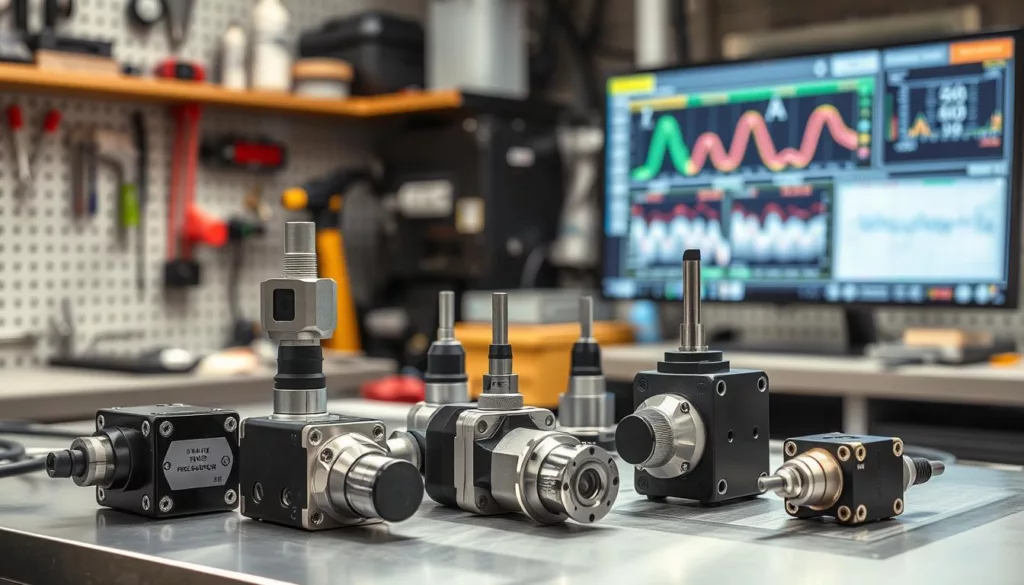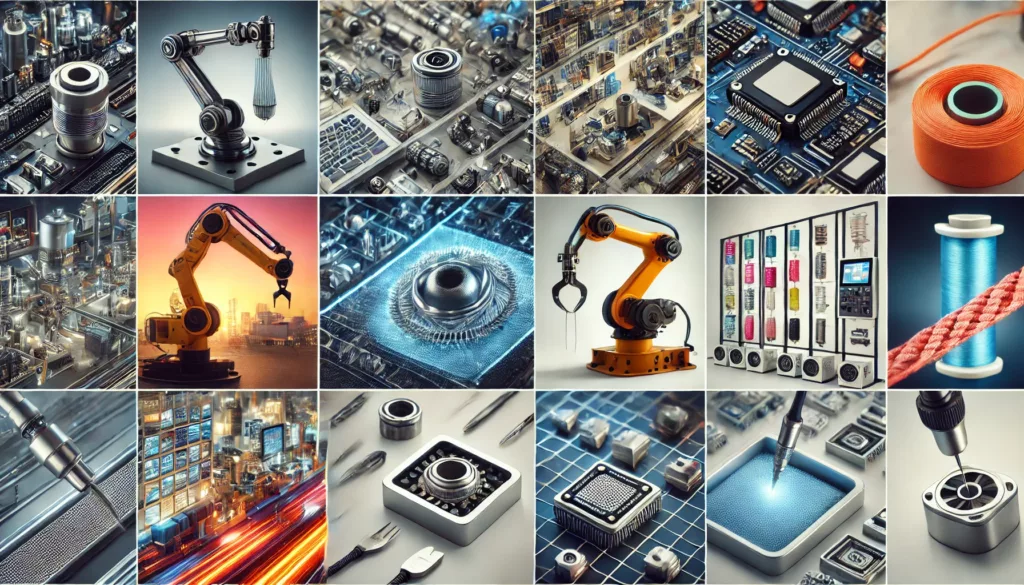High-precision force sensors are integral components in modern technology and industrial applications. These sensors are designed to measure forces with remarkable accuracy, and they are used in various fields ranging from robotics to automotive manufacturing. Understanding what makes a high-precision force sensor requires an exploration of the technology, components, and factors that contribute to its accuracy, durability, and versatility.
The Role of Accuracy in High-Precision Force Sensors
At the heart of every high-precision force sensor lies the critical concept of accuracy. Accuracy is the ability of the sensor to measure a force with minimal error. In many industrial applications, the stakes are high, and even small inaccuracies can lead to costly errors, safety issues, or suboptimal performance. Therefore, accuracy is non-negotiable.
One key feature that contributes to accuracy is the sensor’s calibration process. A well-calibrated sensor ensures that the force measurements it provides are as close to the true value as possible. Calibration is often achieved using known weights or forces, ensuring the sensor’s output matches the expected results. The sensor’s resolution—the smallest force it can detect—also plays a vital role in ensuring high precision. A high-resolution sensor can measure even the slightest changes in force, making it essential for tasks that require fine measurements.
Types of High-Precision Force Sensors
High-precision force sensors come in various forms, each designed for different applications. Some common types include:
- Strain Gauge Sensors: These are among the most popular force sensors and work by measuring the strain (deformation) that occurs when a force is applied. Strain gauges are sensitive to even minute changes in force, making them ideal for high-precision applications.
- Piezoelectric Sensors: These sensors generate an electric charge in response to an applied force. The amount of charge generated is proportional to the force applied, making them highly effective for measuring dynamic forces.
- Capacitive Sensors: These sensors work by detecting changes in capacitance as force is applied to a conductive surface. Their high sensitivity makes them suitable for applications requiring extremely precise force measurements.
Each sensor type has its strengths, but all are designed with one goal: to measure force with unparalleled precision.
Materials Used in High-Precision Force Sensors
The materials used in constructing force sensors significantly impact their precision, durability, and reliability. Metals such as stainless steel are commonly used because of their strength and stability. These materials are not only durable but can also maintain their structural integrity under high forces, ensuring accurate measurements over time.
Semiconductors are used in more advanced force sensors, especially in the case of piezoelectric sensors. They offer the advantage of being lightweight while maintaining high levels of sensitivity. Additionally, some high-precision force sensors use composite materials that combine the benefits of different materials to enhance sensor performance.
How Technology Improves the Precision of Force Sensors
Advances in sensor technology have drastically improved the precision of force sensors. The integration of digital electronics and advanced signal processing techniques allows force sensors to achieve higher accuracy by filtering out noise and reducing errors. For example, digital signal processing (DSP) techniques help improve the sensor’s ability to provide precise measurements, even in noisy environments.
Furthermore, modern sensors often come equipped with self-diagnostics and automatic calibration features. These technologies help maintain high precision over time, ensuring the sensor continues to perform at its best, even after prolonged use or exposure to extreme conditions.
Key Factors That Affect the Precision of Force Sensors
Several factors influence the precision of a force sensor, including:
- Environmental Conditions: Force sensors are often used in harsh environments, where temperature changes, humidity, or electromagnetic interference can affect their performance. High-quality sensors are designed to operate accurately in extreme conditions, ensuring consistent performance.
- Mechanical Design: The physical design of the sensor is critical in maintaining its precision. A poorly designed sensor might suffer from mechanical vibrations, deflections, or inaccuracies caused by manufacturing defects. Therefore, a well-engineered sensor is crucial for high-precision measurements.
- Signal Processing: The sensor’s ability to filter out noise and correctly interpret signals also plays a significant role in its overall precision. Advanced signal processing algorithms enhance the sensor’s sensitivity and accuracy.
Applications of High-Precision Force Sensors
High-precision force sensors are widely used across various industries where precision is paramount. Here are some notable applications:
- Robotics: In robotics, force sensors allow for delicate interactions with objects, ensuring tasks like assembly or manipulation are done with the utmost care.
- Aerospace: Force sensors are used in the testing of aircraft components, ensuring that parts meet safety standards before they are used in production.
- Medical Devices: In medical applications, sensors are used in devices like prosthetics or surgical robots, where precision can be a matter of life and death.
- Automotive: Automotive manufacturers rely on force sensors for quality control, such as testing the strength of components or ensuring proper assembly during production.
- Industrial Automation: Force sensors are integral in automation systems where robots and machines need to operate with high accuracy for tasks such as welding, assembling, and testing.
The Future of High-Precision Force Sensors
The field of high-precision force sensors continues to evolve, driven by the need for greater accuracy, miniaturization, and adaptability. Future developments may see even more compact sensors that are capable of providing high precision in tight spaces, as well as sensors that can communicate wirelessly, offering flexibility in design and ease of integration.
Furthermore, the rise of artificial intelligence (AI) and machine learning (ML) could lead to sensors that not only measure force but also predict future forces and adapt in real-time to changing conditions. This would be a game-changer in industries like robotics and autonomous systems, where real-time decision-making is critical.
Frequently Asked Questions
What makes a force sensor accurate?
What are the different types of force sensors?
What materials are used in high-precision force sensors?
How does temperature affect the accuracy of force sensors?
Can high-precision force sensors be used in harsh environments?
What are the future trends in force sensor technology?
Conclusion
High-precision force sensors are vital to numerous industries where accuracy is essential. Their ability to measure forces with exceptional precision has made them indispensable in applications ranging from robotics to medical devices. As technology continues to advance, the potential for even more precise, adaptable, and compact sensors seems limitless. Whether you’re designing a cutting-edge robotic system or ensuring the quality of aerospace components, high-precision force sensors will remain at the heart of innovation and quality assurance.
Clear Call-to-Action (CTA):
XJCSENSOR is a leading force sensor manufacturer specializing in high-precision sensors tailored for industrial automation, robotics, automotive, and more. Explore our range of customizable sensors designed to meet your specific needs and elevate your projects with top-tier accuracy. Contact us today for more information or visit our website to discover our innovative products.
Related Reading
- How to Choose the Right Force Sensor Manufacturer for Your Project
- Top 5 Force Sensor Manufacturers in 2025 (And Why XJCSENSOR Leads)
- Custom vs. Standard Force Sensors: Which One Do You Need?



